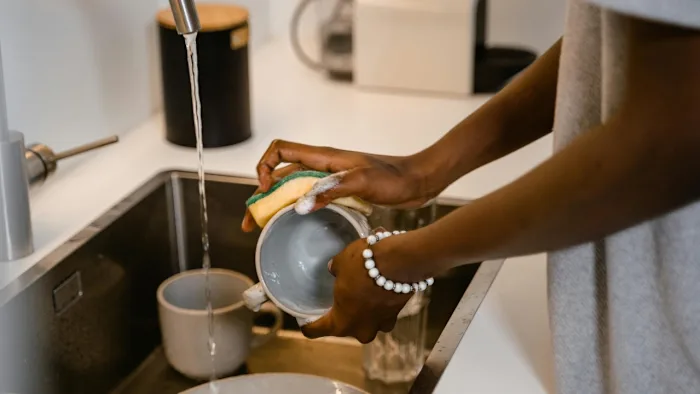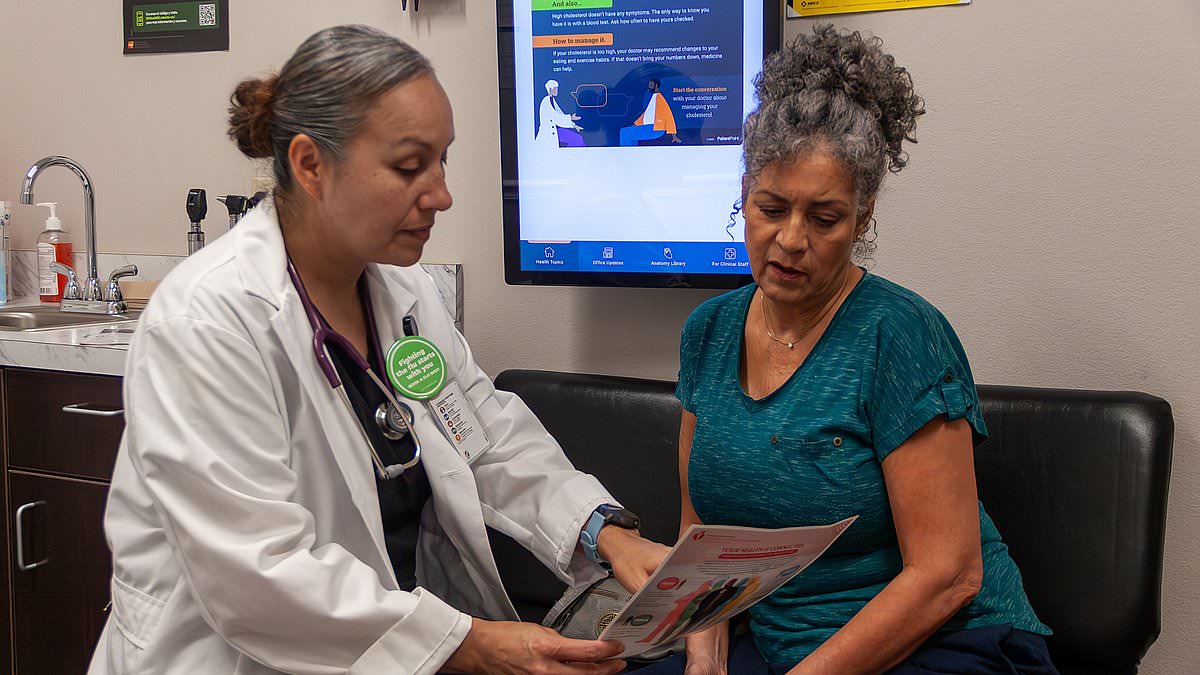Copyright WDIV ClickOnDetroit

We live in a world full of invisible life. Scientists estimate that trillions of bacteria and viruses -- commonly called germs -- are all around us, on nearly everything we touch. The good news? Not all bacteria and viruses are harmful. According to doctors with Henry Ford Health, most are harmless or even beneficial. These friendly microorganisms help train our immune system to recognize what is safe and what could cause illness. Without this crucial immune training, our bodies would be much more vulnerable to infections. That said, some germs are less friendly. Everyday objects and high-touch surfaces can harbor harmful bacteria and viruses that can make us sick if we don’t clean them regularly and properly. Here are 20 common places germs hide in your daily routine -- and simple tips to keep them clean for a healthier home. 1. The bathroom Door handles, toilet handles and faucets are germ hotspots. Tip: Disinfect surfaces daily and deep clean weekly. 2. Carpets and rugs Dust mites, mold and pet dander can trigger allergies and respiratory issues. Tip: Vacuum regularly and deep clean often. 3. Cellphones Phones go everywhere with us -- even the bathroom -- and pick up germs we then touch and put near our faces. Tip: Clean your phone thoroughly with antibacterial wipes multiple times a day and before bed. 4. Children’s toys Kids share toys -- and germs. Tip: Clean toys often or wipe with antibacterial wipes. 5. Cosmetics Makeup brushes and products can harbor bacteria that cause infections. Tip: Wash brushes weekly and replace products as recommended. 6. Cutting boards Raw meat residue can linger and spread foodborne illness. Tip: Wash after each use with warm water and soap. 7. Gym equipment Sweat-covered weights and machines spread germs quickly. Tip: Wipe equipment before and after use. 8. Keys Keys touch countless surfaces throughout the day. Tip: Wipe with antibacterial wipes or spray cleaner regularly. 9. Kitchen appliances Appliances like blenders, coffee makers and food processors can trap bacteria and mold. Tip: Wipe daily and wash removable parts weekly in hot, soapy water. 10. Kitchen sink The sink can be surprisingly germy due to food residue and bacteria. Tip: Sanitize regularly with antibacterial cleaner. 11. Kitchen sponges Sponges often spread germs despite looking clean. Tip: Microwave for 60 seconds before use and replace frequently. 12. Money Cash is one of the dirtiest things we handle. Tip: Use cards when possible or wash hands after handling cash or coins. 13. Pet bowls Dirty bowls breed bacteria harmful to pets and humans. Tip: Clean often with warm, soapy water and rinse thoroughly. 14. Pillows and bed sheets Beds are breeding grounds for dust mites and bacteria, which can weaken the immune system. Tip: Wash sheets weekly in hot water and replace pillows yearly. 15. Public bathrooms Door handles, toilet seats and faucets in public restrooms are crawling with germs. Tip: Wash hands thoroughly, dry with a paper towel, and use it to turn off faucets and open doors. 16. Purses Purses pick up germs everywhere they go. Tip: Wipe down regularly and avoid placing them on the floor. 17. Refrigerator drawers and handles Raw meat juices spread bacteria onto fridge surfaces. Tip: Wipe down weekly with antibacterial wipes. 18. Remote controls Frequently touched and often dropped, remotes collect germs quickly. Tip: Wipe both sides regularly with disinfectant wipes. 19. Shopping carts Cross-contamination from raw food is common on grocery carts. Tip: Wipe handles and surfaces before shopping, and bag raw foods separately. 20. Toothbrushes Your mouth naturally contains bacteria, but toothbrushes exposed to the open air pick up even more. Tip: Rinse before and after use, store in a dry, covered place, and replace every three months or after illness. Clean smart, live healthy While it’s impossible to live in a completely germ-free world, you can protect yourself by building healthy habits. Wash your hands with soap and warm water for at least 20 seconds throughout the day. When handwashing isn’t possible, use an alcohol-based sanitizer with at least 60% alcohol. Regularly cleaning everyday items you use and wiping down high-touch surfaces can also greatly reduce your risk of illness and protect those around you. Replace worn-out personal items like toothbrushes and sponges and make hand hygiene a priority. These simple actions add up to a healthier home, family and lifestyle.



